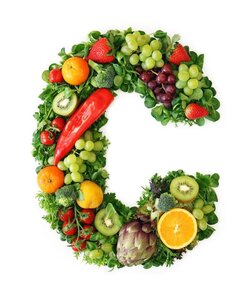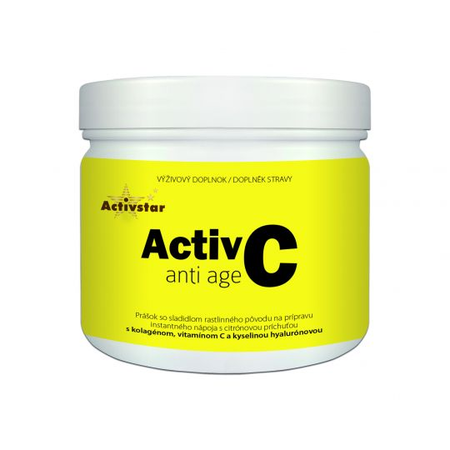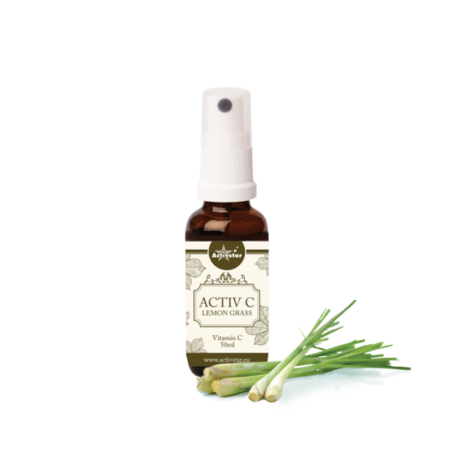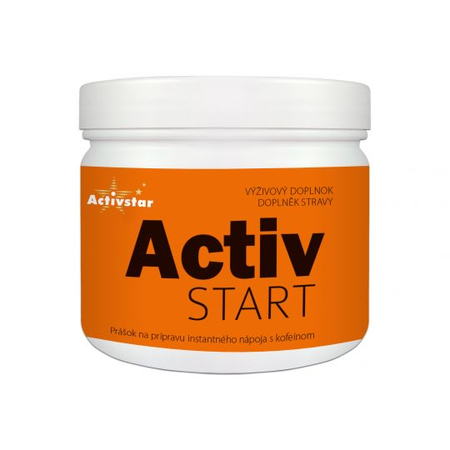Vitamin C is an indispensable component of human nutrition. It performs a large number of functions in the body.
L-ascorbic acid, also referred to as vitamin C, is a water-soluble substance with powerful antioxidant effects. Vitamin C has only been around for less than 100 years, and people have been dying from its deficiency - known as scurvy - since prehistoric times.
Most plants and animals synthesize vitamin C from glucose. Humans (as well as other primates, or guinea pigs) cannot synthesize this substance because they lack the enzyme L-gulonolactone oxidase. Therefore, vitamin C is an essential and essential dietary component and the body is solely dependent on its intake in the form of food (Morrissey, Hill, 2011).
In archaeological research from the Stone and Bronze Age, the effects of scurvy have been observed on skeletal remains. Various cases of sailors, pirates and shipwrecked sailors dying after months of lack of plant food are also known from the past, following tooth loss, bleeding, bone fractures, suppuration and skin breakdown.
It is essential for the development and support of connective tissues and plays an important role in bone formation, wound healing and healthy gums. In addition, vitamin C has many metabolic functions in the body, being important for: activation of folic acid (vitamin B9), conversion of cholesterol to bile acids, contributes to the resorption of iron (reducing Fe3+ to Fe2+), copper, some amino acids (e.g., iron, iron and copper), and other amino acids (e.g., vitamin C, vitamin C, vitamin C, vitamin C, vitamin C, vitamin C, vitamin C, vitamin C, vitamin C, vitamin C, vitamin C, vitamin C, vitamin C, vitamin C, vitamin C). It is an important cofactor of proline and lysine hydrolases, and is involved in the formation of collagen, carnitine, dopamine, some neurotransmitters (e.g. serotonin). It contributes to the protection of the body from heavy metal burden (Iqbal et al., 2004), phagocytic function of leukocytes, steroid hormones in the adrenal glands, regulation of blood pressure, stimulation of certain enzymes (Walingo, 2005), restoration of vitamin E (Morrissey, Hill, 2004).
Vitamin C is one of the very effective antioxidants due to its properties. It protects cells from oxidative stress while allowing the regeneration of other antioxidants (such as vitamin E). It can act as an anticarcinogen and reduces the risk of cardiovascular disease (Šlosár, Čekey, 2008).
Many studies show that vitamin C can help prevent cancer by inhibiting the formation of nitroso compounds in the stomach and stimulating the immune system. Supplementation with sufficient vitamin C counteracts the bacterium Helicobacter pylori, which is thought to be a significant risk factor in the development of gastric cancer. Vitamin C protects the body against environmental pollutants such as carbon monoxide, hydrocarbons, pesticides and heavy metals. Protection against these dangerous substances lies in the stimulation of enzymes in the liver that detoxify the body.
Vitamin C also helps protect the body by limiting the formation of nitrosamines, cancer-causing substances that come from nitrates found in many food sources (Iqbal et al., 2004).
Vitamin C has an important role in the immune system, stimulating leukocytes to increase bacterial degradation and secretion of antibodies, promoting interferon synthesis, and increasing the body's resistance to cold. Last but not least, vitamin C as an important factor is involved in the prevention and fight against viral and bacterial infections (especially against respiratory diseases and colds). It has been shown to increase the absorption of dietary iron by up to 5-fold, thus acting as a preventive against iron deficiency anaemia (Kerestes et al., 2011).
With vitamin C deficiency, the elasticity of blood vessels is lost, bleeding into the skin, mucous membranes, joints, under the periosteum appears. Infants and young children are restless, anaemia, impaired ossification and a condition similar to vitamin D deficiency (so called haemorrhagic rickets) appear. Vitamin C deficiency leads to weakening of collagen structures. Low vitamin C intake is also associated with an increased risk of chronic diseases such as coronary heart disease, cancer and cataracts. Vitamin C deficiency manifests itself in bleeding gums, fatigue, susceptibility to disease and heart problems. Vitamin C deficiency leads to increased incidence of infections, allergies, rhinitis or slowed wound healing.
Overdosing on this important vitamin is virtually impossible, as the body can easily excrete excess amounts. The daily recommended requirement for vitamin C is 200 mg/person/day. According to the authors, increased doses of vitamin C should be taken by premature newborns, people working in infectious or stressful environments, and smokers.
More than 80% of vitamin C intake comes from fruits and vegetables and a minority is contained in meat, eggs and dairy products, Morrissey and Hill (2011). Rich sources of vitamin C include blackcurrants, peppers, horseradish, Brussels sprouts, curly kale, broccoli, kiwi, cauliflower, kohlrabi, strawberries, red cabbage, lemon, orange, apples, pears, kale, white cabbage, and last but not least, rose hips, chokeberries, and sea buckthorn. Of the animal products, milk contains the most vitamin C, according to the authors.
The vitamin C content of fruit and vegetables is highly variable and depends on a number of factors (variety, climatic conditions, nutrition and fertilisation, degree of ripeness, storage, cooking and processing of vegetables and fruit). In addition, vitamin C is the least stable and most sensitive of all the vitamins and is used as an indicator of the degree of change due to the processing of vegetable products. Losses occur mainly during storage, cooking and industrial processing, the most significant being losses by leaching (blanching, cooking, canning) and oxidation. The lowest losses can be achieved by high heat short-term sterilisation. Vitamin C is most stable during freezing and cold storage"(ŠLOSÁR, 2013)."
There are several options for vitamin C supplementation. There are a number of preparations on the market containing vitamin C alone or in multivitamin mixtures. However, based on the average requirement, effervescent tablets or other pharmaceutical tablets or capsules contain unnecessarily large amounts that are virtually unusable (excreted in the urine) and therefore physiologically and economically useless.
Literature sources:
- IQBAL, K., KHAN, A., KHAN KHATTAK, M. A. 2004. Biological Significance of Acid Ascorbic Acid (Vitamin C) in Human Health – A Review. Pakistan Journal of Nutrition. 2004, roč. 3, č. 1, s. 5-13. ISSN 1680-5194.
- KERESTEŠ, J. et al. 2011. Zdravie a výživa ľudí. Vydavateľstvo Bratislava : CAD Press, 2011. 1037 s. ISBN 978-80-88969-57-0. 126 Slovak Journal of Health Sciences 2013, roč. 4, č. 1
- MORRISSEY, P. A., HILL, T. R. 2011. Vitamins ?Vitamin C. Encyclopaedia of Dairy Sciences. 2. vydanie. Vydavateľstvo Salt Lake City : Academic Press Ltd. s. 667-674. ISBN: 978-0-12-374407-4.
- ŠLOSÁR, M. 2011. Odroda ako faktor ovplyvňujúci kvalitu zeleniny. Zahradnictví. 2011, roč. 15, č. 2, s. 30-31. ISSN 1213-7596.
- ŠLOSÁR, M., ČEKEY, N. 2008. Hlúbová zelenina – významná súčasť výživy človeka. Zahradnictví. 2008, roč. 12, č. 8, s. 16-17. ISSN 1213-7596.
- ŠLOSÁR, M. Slovak Journal of Health Sciences 2013, roč. 4, č. 1
- WALINGO, K. M. 2005. Role of vitamin C (ascorbic acid) on human health – a review. African Journal of Food Agriculture Nutrition and Development. 2005, roč. 5, č. 1. ISSN 1684-5378.
Related
Products in our offer
When I got to know Activstar, I had the opportunity to measure the levels of vitamins and minerals in my body. I had about twenty boxes in the yellow box and six in the red box. It struck me that I had such a bad cardiovascular system , although my heart was pounding but I didn't pay attention to it, when I bought my KA I did the analysis again and decided to adjust it with our Activ cell products, resvervatrol, later Activ No drink and spray , Activ C anti age I drink every day . My pressure, heart palpitations,dizziness,dizziness,malaise have been corrected. I have been taking the products since 2019 till now 2022 and continuing My results on KA first measurement and last measurement.






0 Commets